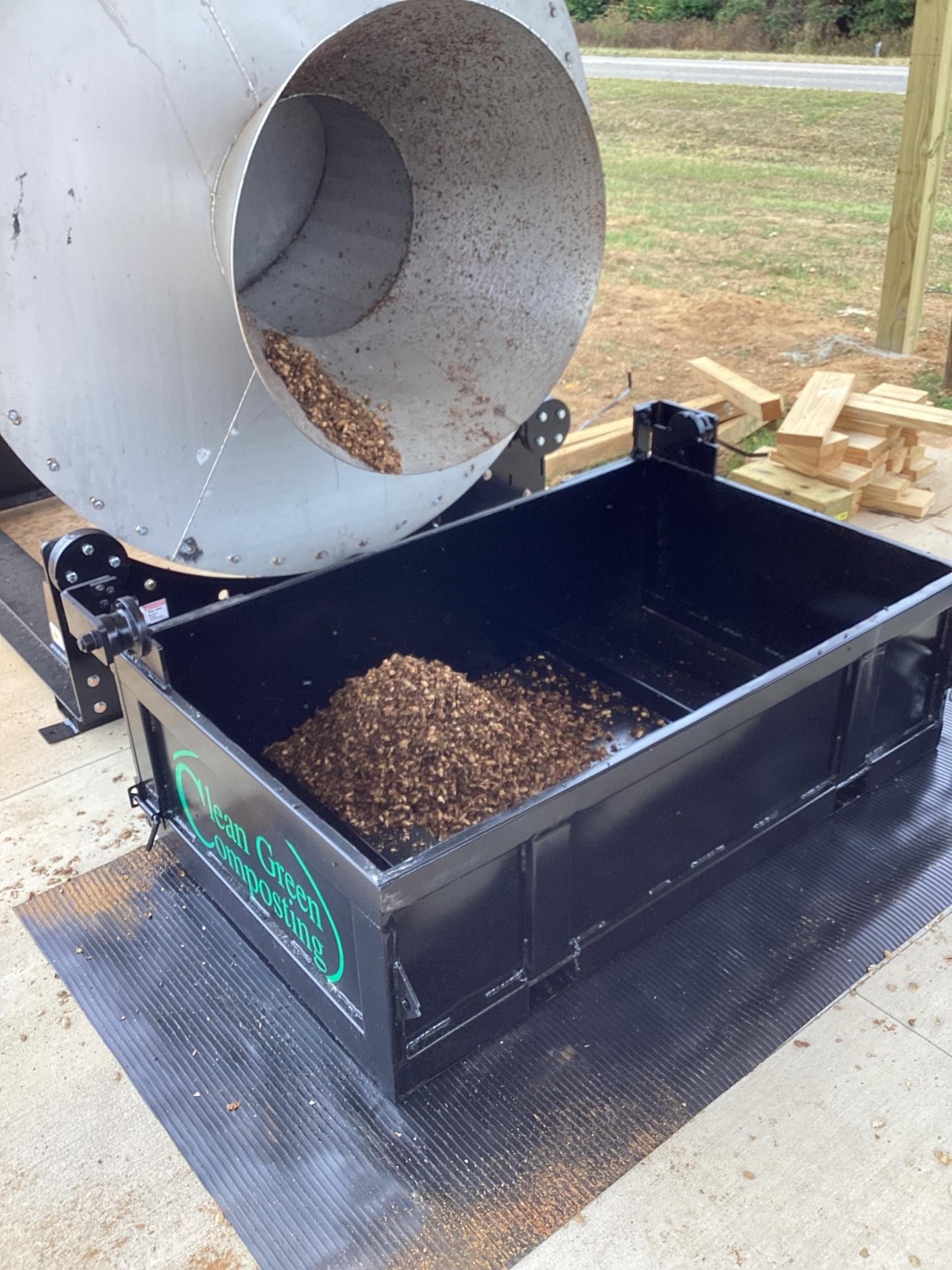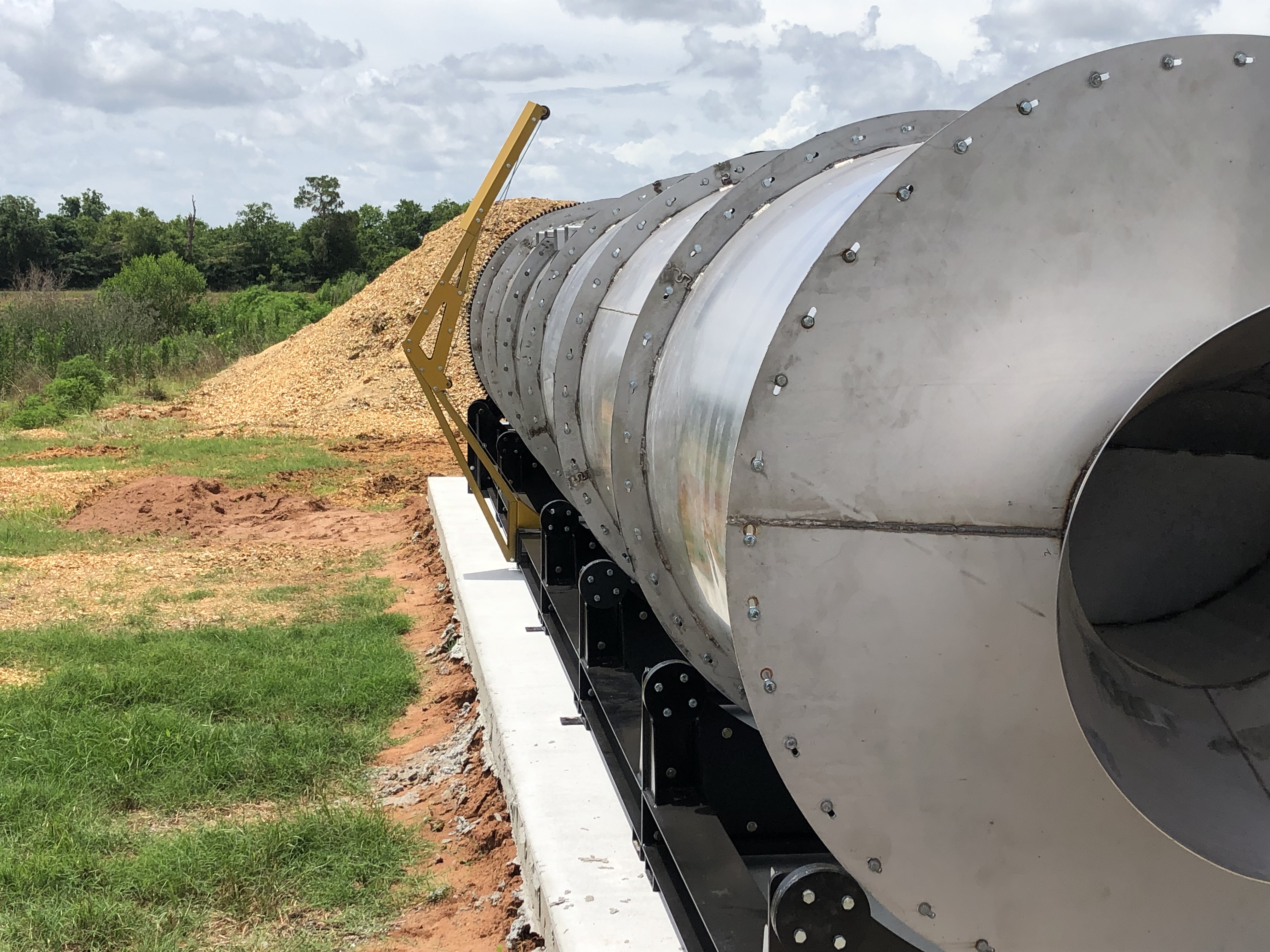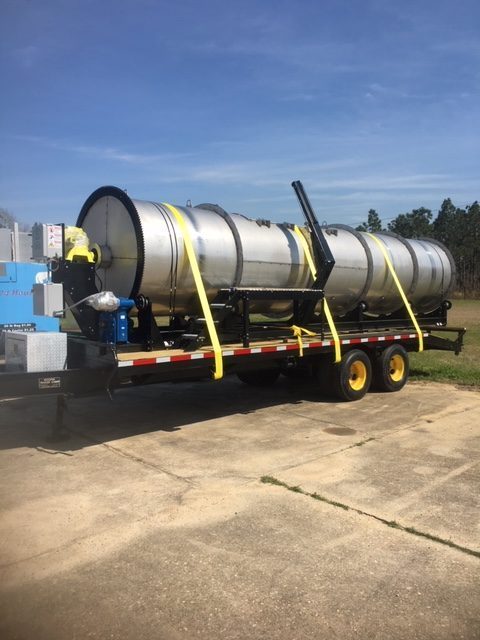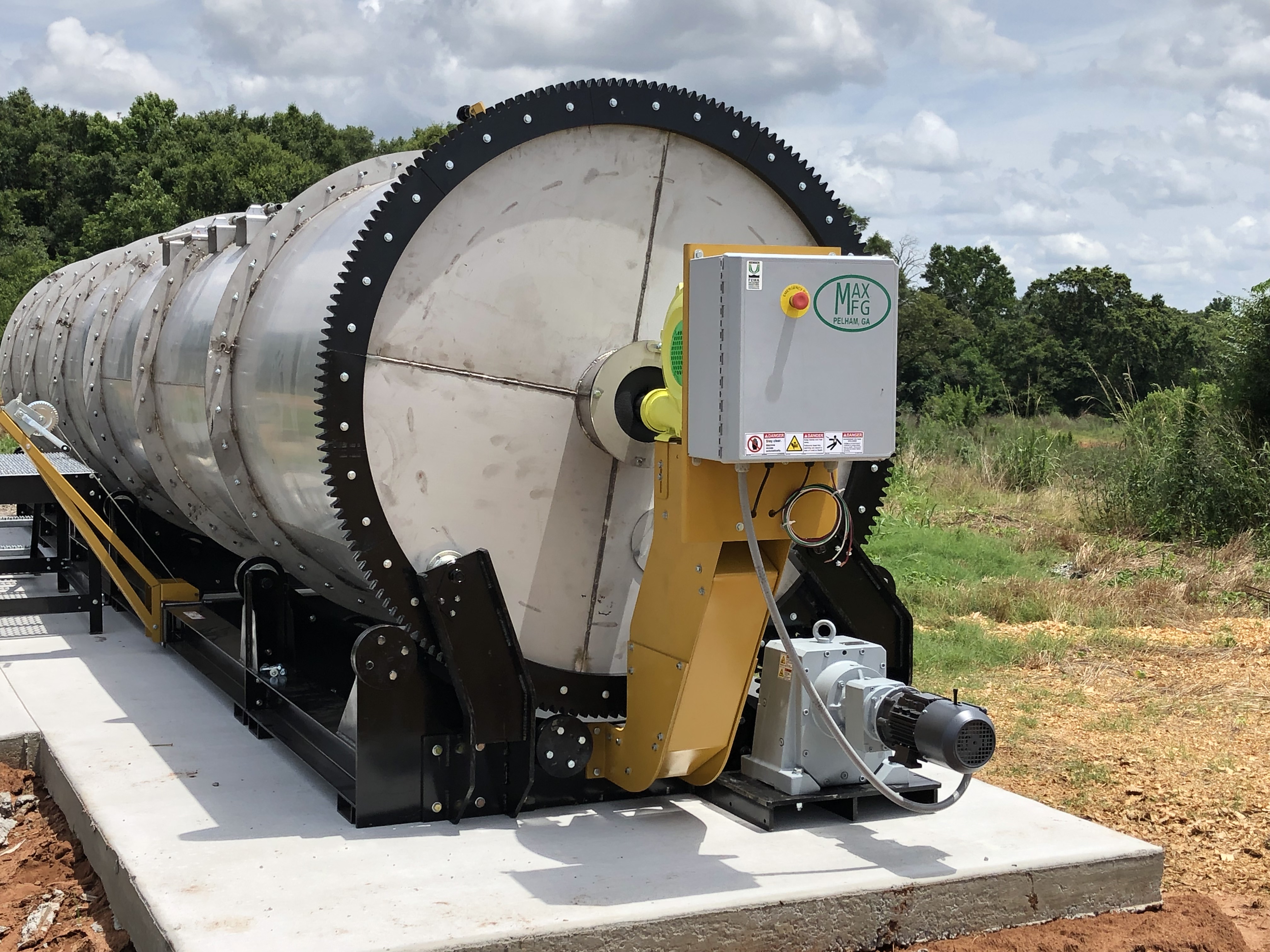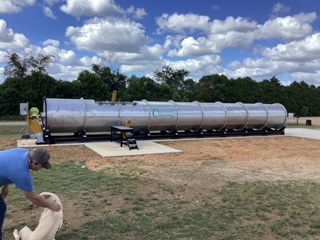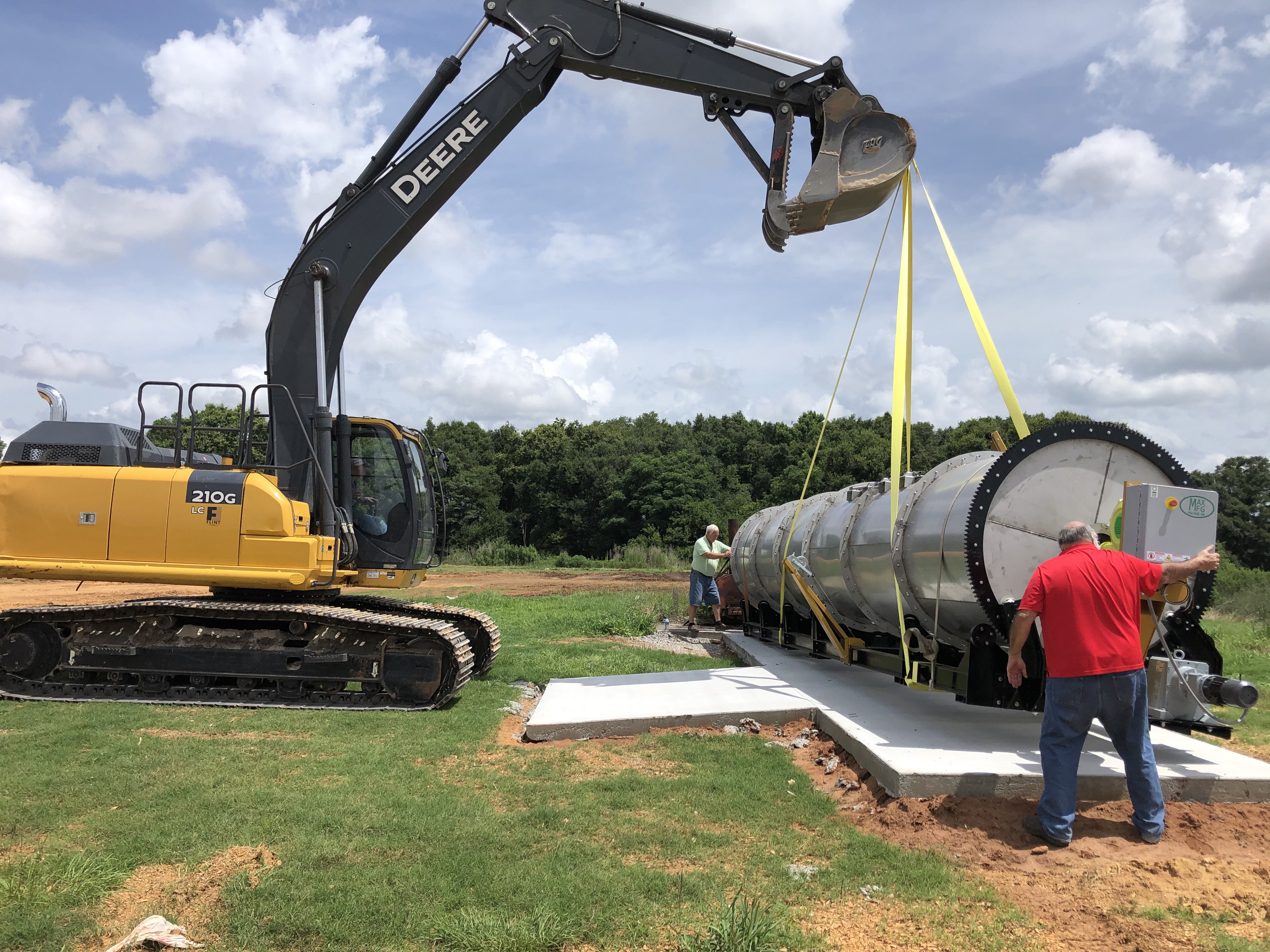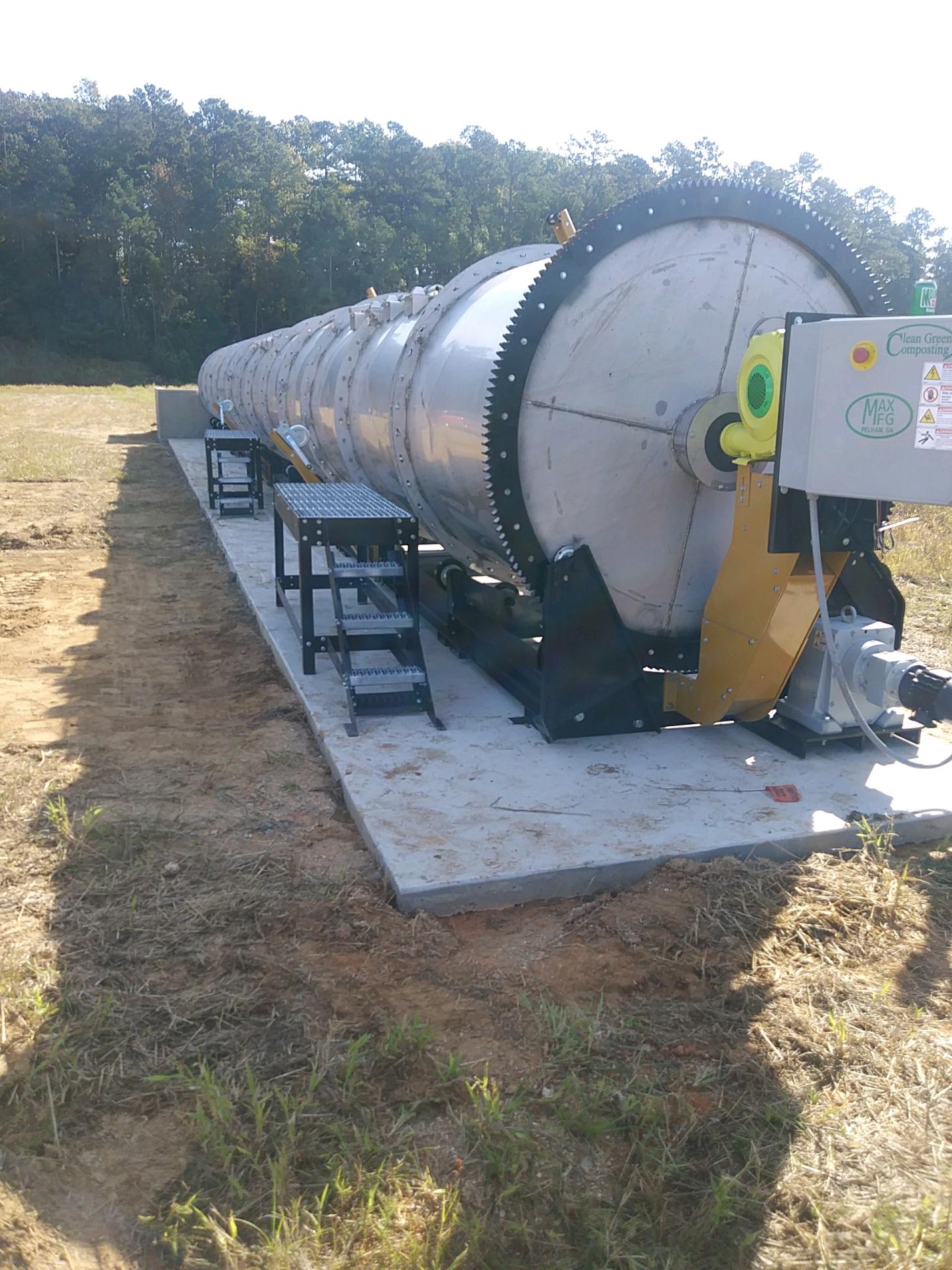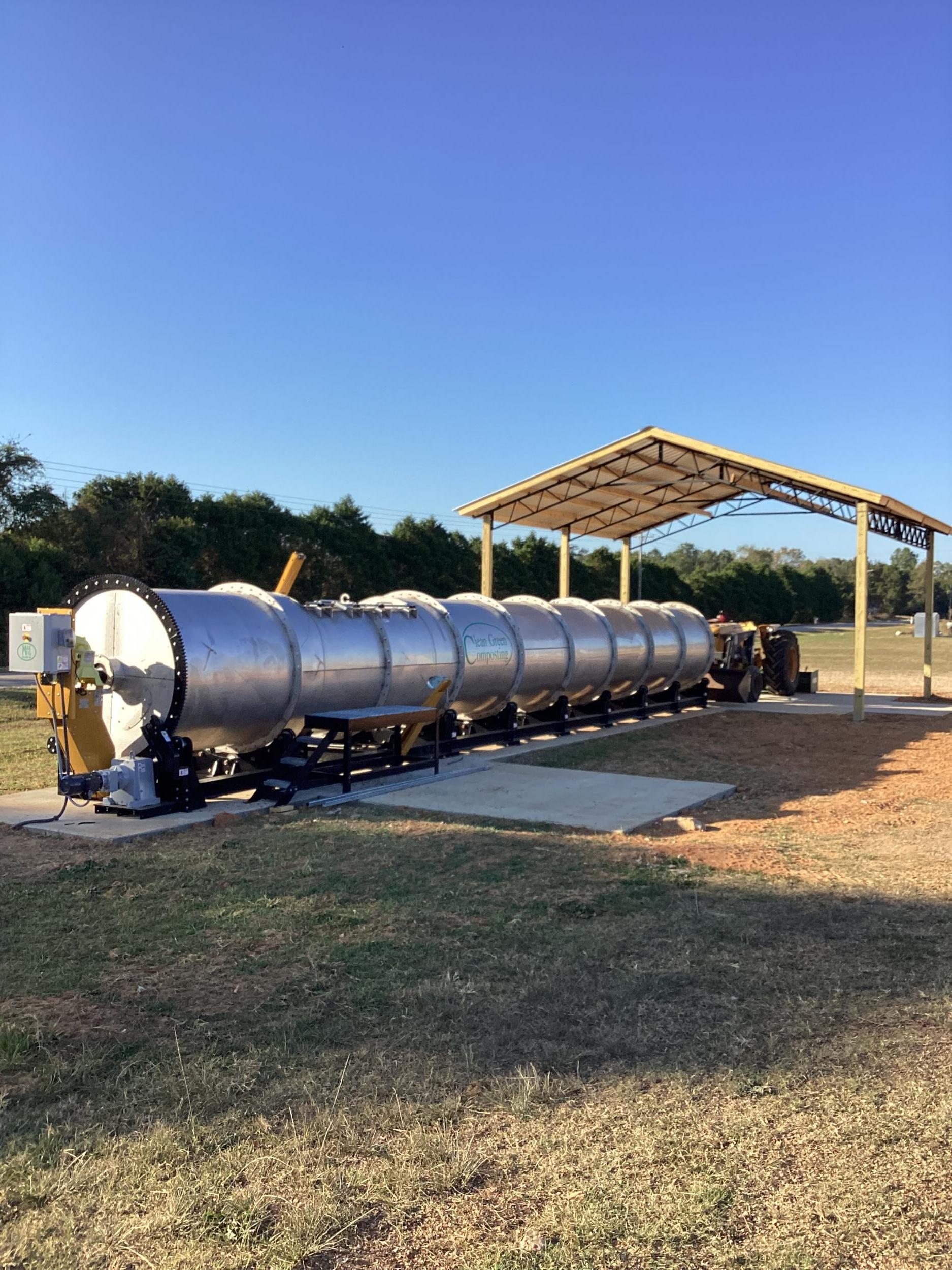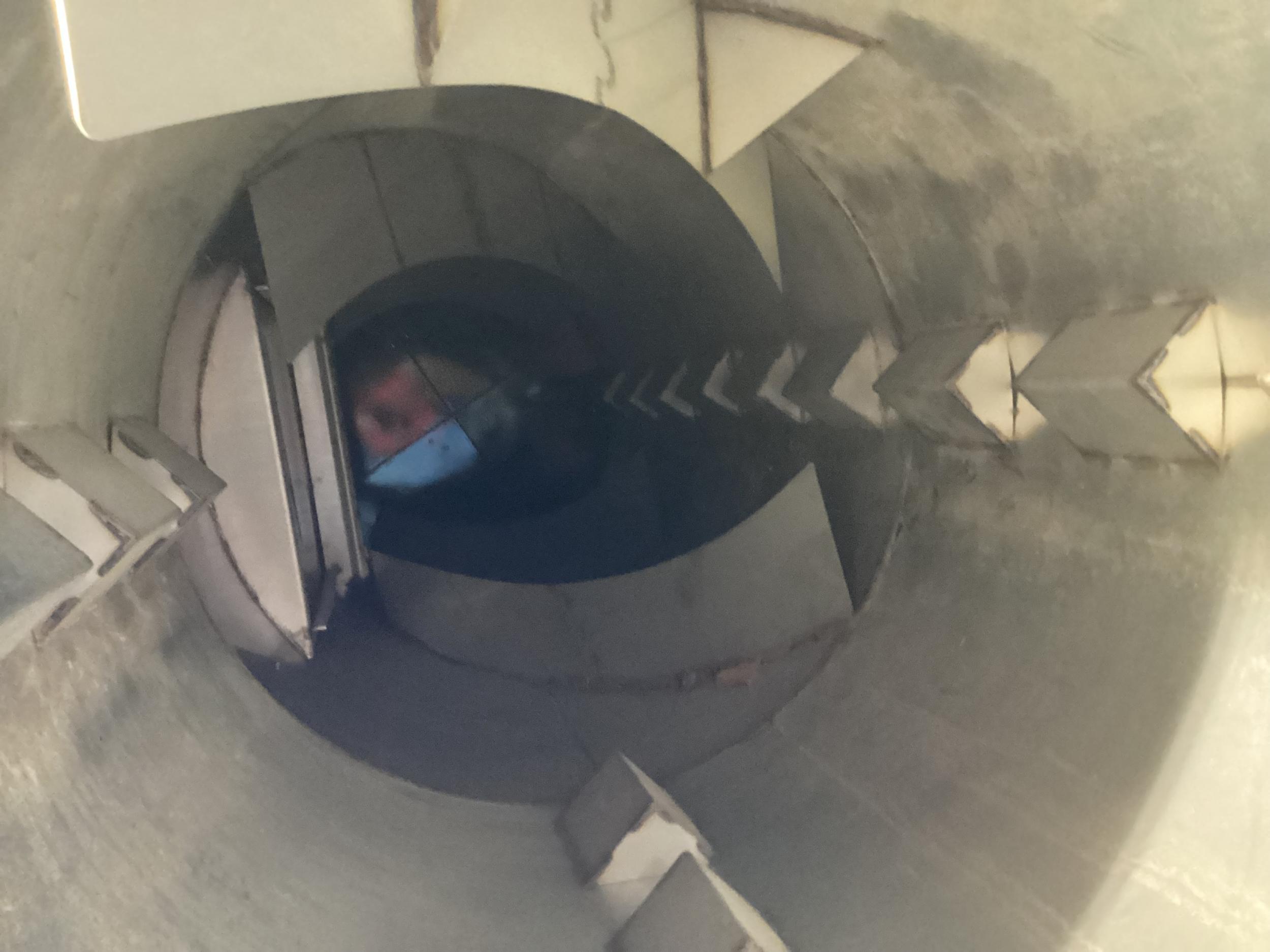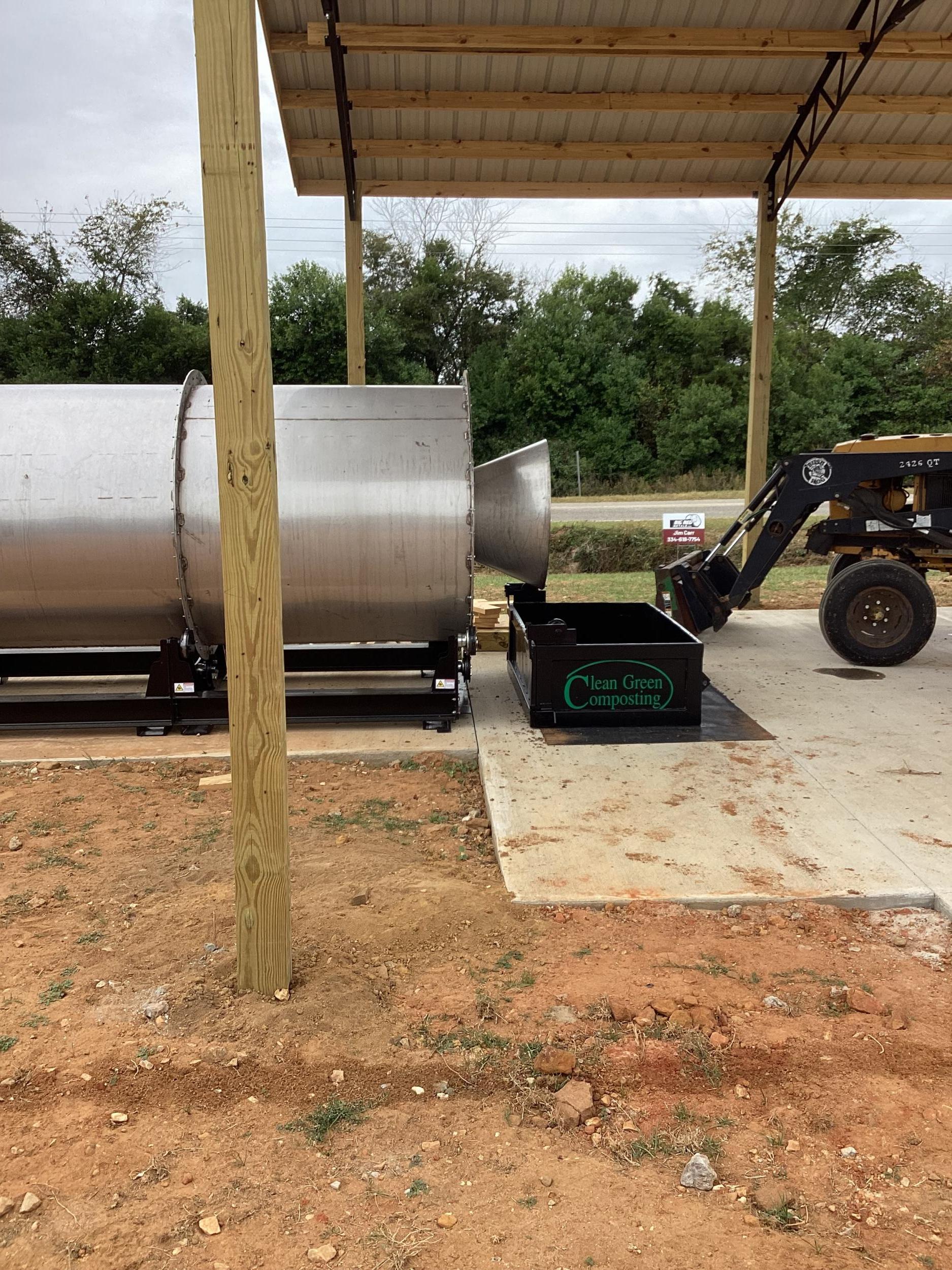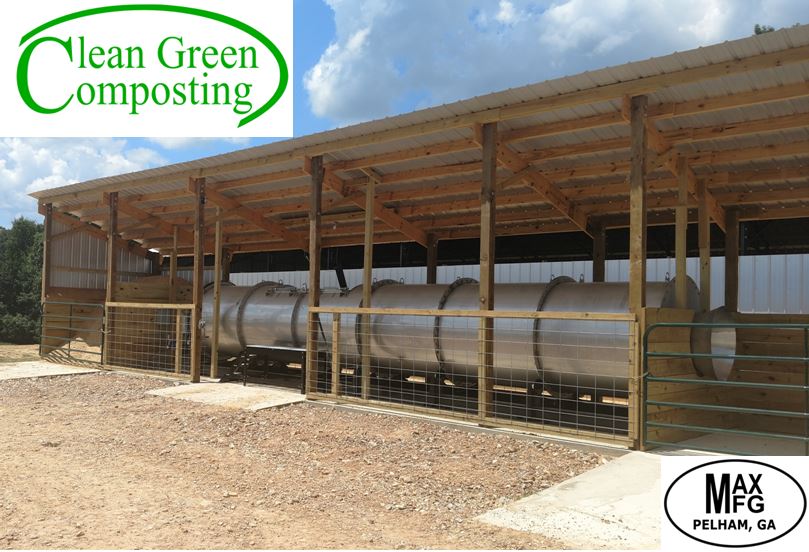Simplified Solutions for Animal Mortality
Our In-vessel composter comes in 5-foot stainles sections and can be extended to ensure you are able to get the correct length for your operation. Each section consists of a 5-foot stainless steel drum sitting on sealed agri-bearing 6” rollers on a constructed steel frame. The rollers allow for slowly turning the drum with a gear-reduction motor. Inside the drum is stainless steel flighting and baffles to move the material down the drum. There is a temperature probe inside for monitoring the heat to make sure it’s getting the desired temperature. Also, inside you find a snorkel system that pushes the air from the input end, pushing air through the material will speed up the composting time plus, the hot air coming from the discharge will discourage flies or bugs from entering the drum. This technology offers the ultimate compost tool for odor and emission control, leachate control and management, and cold weather performance.
Composting is considered a positive alternative method of processing dead birds in an environmentally sound manner. Composting is the most widespread method used in states that have banned pits. It is considered by many as the best alternative for mortality management. The composting process converts dead birds into a useful, inoffensive, stable end product that can be field-applied for crop use and soil improvement. This relatively inexpensive method of using dead birds has gained wide acceptance throughout the poultry industry. Availability of cost-share funds to offset composter facility construction costs has contributed to the increase in the use of this mortality disposal method. Contact your local USDA / NRCS office and ask for details on the cost share programs.
All composting requires four basic components: a carbon source, a nitrogen source, oxygen, and moisture. The process is driven by thermophilic aerobic microbes (organisms that thrive in high-temperature, oxygenated environments) which require these four components to multiply and, in doing so, decompose the carcasses.
The carbon source should be an absorptive material, typically the chicken litter coming from the growing houses or storage. This litter material, peanut hulls, or wood shavings work effectively in the composter drum. With any type of composter, if a proper carbon balance isn’t achieved, the fluid generated from the decomposing carcasses may begin to leak at the bottom of the drum. The basic concept of layering a compost bin also is followed when using container composters—i.e., one layer of carbon material followed by one layer of carcasses—repeating the process until all the carcasses are placed in the drum and then topped off by a layer of carbon material. As with the bin composter, the first layer of carbon should be at least two times the amount of the first layer of mortality. This extra carbon material serves to absorb the fluids that come from the carcasses and ensure an appropriate carbon-to-nitrogen ratio. The drum is programmed based on the number of carcasses, the weight of the carcasses, and the size of the drum.
If you are interested in pricing for your your farm please use the button to submit your information about your operation and someone from our sales team will contact you soon!
